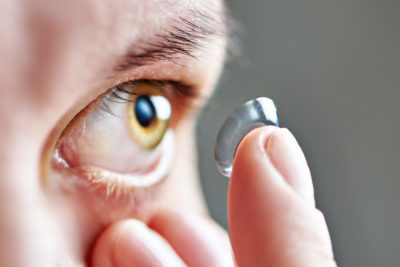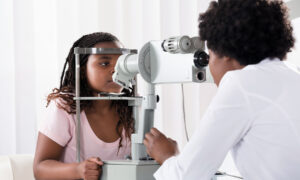April 1, 2020
By Dwight Akerman, OD, MBA, FAAO
Chief Medical Editor, Review of Myopia Management
 Although there has been much discussion about orthokeratology (OK) in the peer-reviewed literature, clinical magazines, internet forums and educational conferences, little is known of the true extent to which these lenses are prescribed around the world. This paper examines trends in, and factors associated with, OK contact lens fitting in 45 countries over 14 years (2004-2017, inclusive). Such information can provide (a) a valuable yardstick for contact lens clinicians, against which they can assess their prescribing approaches to OK and (b) useful guidance to the contact lens industry on the clinical utilization of this specialist lens category.
Although there has been much discussion about orthokeratology (OK) in the peer-reviewed literature, clinical magazines, internet forums and educational conferences, little is known of the true extent to which these lenses are prescribed around the world. This paper examines trends in, and factors associated with, OK contact lens fitting in 45 countries over 14 years (2004-2017, inclusive). Such information can provide (a) a valuable yardstick for contact lens clinicians, against which they can assess their prescribing approaches to OK and (b) useful guidance to the contact lens industry on the clinical utilization of this specialist lens category.
The results of this survey showed that orthokeratology fits represented 1.2 percent of all contact lens fits, with significant differences between nations, ranging from no fits recorded in Brazil, Egypt, Indonesia, Iran, Lithuania, Nepal and the United Arab Emirates, to 6.0 percent in The Netherlands. Relatively high rates of OK fitting in Hong Kong (5.9 percent) and Taiwan (3.6 percent) could be related to the reported myopia control capabilities of OK as a strategy to constrain the myopia epidemic in these countries. Interestingly, orthokeratology fits in the United States represent slightly less than 1 percent of all contact lens fits.
There has been a slight overall increase in OK lens fitting over the survey period. The global extent of OK contact lens fitting has slowly risen through the 14-year survey period, increasing from 0.5 percent of all lens fits in 2004 to 1.2 percent in 2017
Orthokeratology contact lens prescribing continues to be a niche activity, with this lens type typically being fitted in high oxygen permeable materials on a planned replacement basis to younger patients. The slight rise in OK fitting over the 14 years of this survey possibly reflects (a) an increasing interest in OK lens fitting among practitioners, (b) a growing awareness among lens wearers of OK as an alternative to conventional lens wear and (c) a greater appreciation among practitioners and lens wearers of the potential for these lenses to reduce the rate of myopia progression in children and teenagers.
ABSTRACT
International survey of orthokeratology contact lens fitting
Morgan PB, Efron N, Woods CA, Santodomingo-Rubido J; International Contact Lens Prescribing Survey Consortium.
PURPOSE: To determine the extent of orthokeratology (OK) contact lens fitting worldwide and to characterize associated demographics and fitting patterns.
METHODS: Survey forms were sent to contact lens fitters in 45 countries between January and March every year for 14 consecutive years (2004 – 2017, inclusive). Practitioners were asked to record data relating to the first 10 contact lens fits or refits performed after receiving the survey form.
RESULTS: Data were obtained for 295,044 contact lens fits, of which 2,702 were with OK lenses and 292,342 were with other lens types (non-OK). Overall, OK lenses represented 1.2 percent of all contact lens fits, with significant differences between nations (p < 0.0001), ranging from no fits recorded in Brazil, Egypt, Indonesia, Iran, Lithuania, Nepal and the United Arab Emirates, to 6.0 percent in The Netherlands. There has been a slight overall increase in OK lens fitting over the survey period (p < 0.0001). OK lenses were fitted to younger persons (OK, 25.0 ± 12.8 years vs. non-OK, 39.8 ± 14.9 years) (p < 0.0001). A higher proportion of males (55 percent) were fitted with OK lenses versus non-OK lenses (30 percent) (p < 0.0009). There was a skewed distribution toward OK lenses being fit with higher oxygen permeable materials (p < 0.0001) and on a planned replacement basis (p < 0.0001).
CONCLUSIONS: OK contact lens prescribing is a niche activity, with this lens type typically being fitted in high oxygen permeable materials on a planned replacement basis to younger males. The slightly increasing rate of OK fitting, albeit at a very low level, may be attributed to practitioner interest in the reported myopia control properties of this lens type.
Morgan, P. B., Efron, N., Woods, C. A., Santodomingo-Rubido, J., & International Contact Lens Prescribing Survey Consortium. (2019). International survey of orthokeratology contact lens fitting. Contact Lens and Anterior Eye, 42(4), 450-454.
DOI: 10.1016/j.clae.2018.11.005











